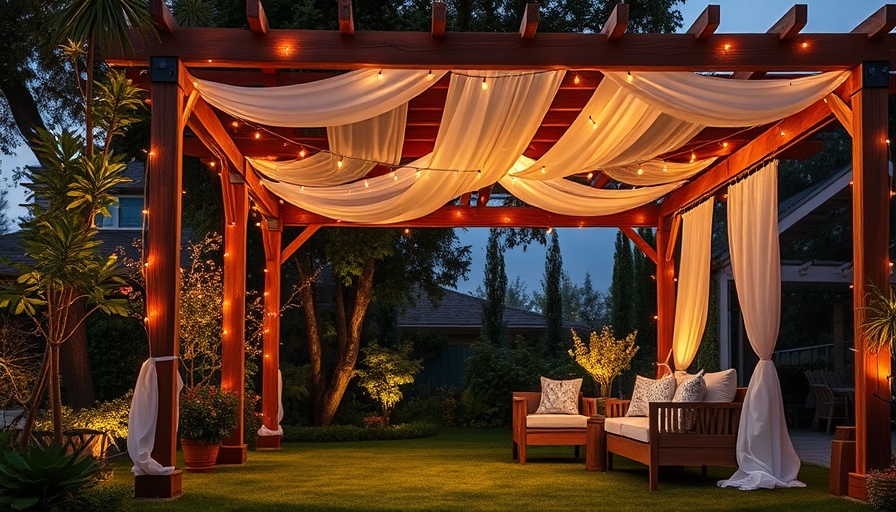
Understanding the Allure of Pergolas
Pergolas have become a hallmark of modern landscape design, seamlessly blending function and form to create inviting outdoor spaces. These elegant structures serve not only as beautiful additions to gardens and patios but also enhance the cozy atmosphere of any outdoor setting. As homeowners increasingly seek ways to extend their living spaces outdoors, pergolas have emerged at the forefront of this trend.
What Is a Pergola?
A pergola is an architectural structure defined by its upright posts and horizontal beams, typically featuring an open or semi-open roof made of lattice or solid materials. The primary function of a pergola is to offer shade while allowing light to filter through, making them ideal for outdoor leisure areas. Traditionally crafted from wood, today’s pergolas are available in various materials, including aluminum, steel, and composite options, catering to diverse aesthetic and functional preferences.
Exploring Pergola Types
With advancements in design and technology, various types of pergolas have gained popularity:
- Traditional Pergolas - Usually constructed from wood or metal, offering open or semi-shaded areas perfect for gardens.
- Louvered Pergolas - Featuring adjustable slats that allow users to control sunlight and air, adapting to changing weather.
- Motorized Pergolas - Equipped with automated controls for convenience, often incorporating LED lighting and sensors for weather conditions.
- Folding Pergolas - These portable structures can be easily set up or disassembled, great for seasonal or temporary use.
The Value of Adding a Pergola
Besides their aesthetic value, pergolas offer numerous functional benefits. They create a cozy outdoor sanctuary, protecting against sun glare, sporadic rain, and wind. By serving as an extension of the home, they effectively create an additional “room” in nature, enhancing the enjoyment of outdoor living. Moreover, integrating climbing plants can provide a lush, natural canopy, while modern additions like lighting and seating can transform any courtyard into an upscale lounge destination.
Design and Placement Considerations
To ensure your pergola complements your landscape, careful consideration must be given to its location and design. Most pergolas are best positioned near the house, pool, or within garden areas, harmonizing with existing features. Aligning the orientation with the sun's movement optimizes its usability for shade and light, providing maximum comfort throughout various times of the day.
Benefits of Pergolas Beyond Aesthetics
Pergolas are more than just attractive structures; from a real estate perspective, adding a pergola can increase the value of your property. They enhance outdoor usability, making homes more appealing to potential buyers or renters. The ability to create a stylish outdoor area for gatherings can be a significant selling point. By increasing the aesthetic and functional appeal of your externals, homeowners can invest wisely in outdoor improvements.
Common Misconceptions About Pergolas
One of the prevalent misconceptions about pergolas is that they only serve a decorative purpose. In reality, they are multi-functional structures that provide critical shade and privacy, enhance outdoor comfort, and hold significant landscaping value. Furthermore, many believe that wooden pergolas require extensive maintenance, while modern materials like aluminum and composites are designed for durability and minimal upkeep.
Utilizing a pergola not only adds character to your outdoor space but can also represent a small investment towards enhancing your property. As design trends evolve, so does the versatility of pergolas, making them a perfect solution for homeowners looking to elevate their gardens.
 Add Row
Add Row  Add
Add 



Write A Comment